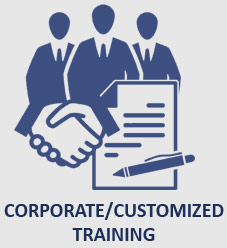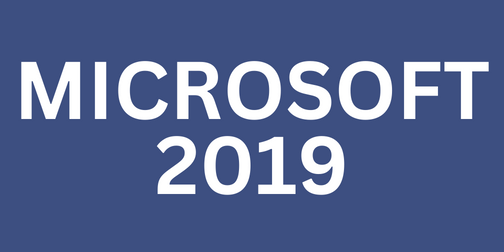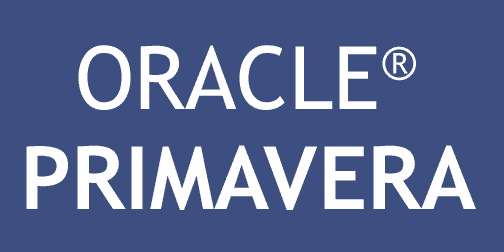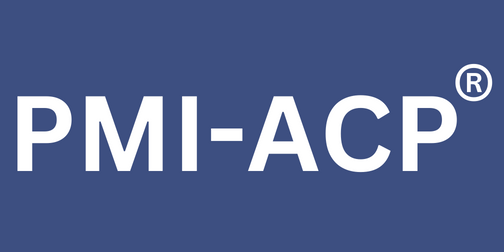
Project to Product and the Agile Product Operating Model
Posted On November 20, 2024 - 16:43 PM
In the current fast-paced business world Companies are gradually changing from a project-based to a more product-oriented mindset. This shift, referred to by the name of "Project to Product," is caused by the necessity for speedier production of value, constant innovation, and the ever-growing demands for flexibility in the development of products. It is the agile product operating model (POM) plays an essential role in this process, allowing companies to bring their teams, processes and culture around the production of results instead of the successful completion of projects.
In this blog we'll look at the concept of Project to Product, what it is and what it can be used to help organizations make the transition smoother. The Agile Product Operating Model can aid organizations in making the transition more smooth and efficient.
Understanding the Project to Product Shift
The standard approach for most companies is to work on projects. The term "project" is usually a one-time endeavour with a predetermined beginning and ending date that is aimed at producing a certain outcome like an innovative feature, service or product. However, this approach to project management is not ideal in the current digital world, in which companies must provide continuous quality to their customers at a rapid rate.
The transition of focus from a project to the product is a long-term importance of the product and continues enhancement, development and customer-centricity as primary principles. This way the product is viewed as the main source of value to business, and teams of product developers are empowered to continually improve the product in response to the feedback of customers and market demand. Here is the place where the Agile Product Operating Model comes in.
What is the Agile Product Operating Model (POM)?
The Agile Product Operating Model (POM) is an approach to help support the transition away from the traditional management of projects to an Agile method of focusing on the product. It helps organizations align themselves around the continuous development and release of products by using Agile methods in every aspect of the lifecycle of a product, from strategy to implementation.
The Agile Product Operating Model is focused on delivering value incrementally and gradually through self-organized, multi-functional product teams. They work in brief time frames (often known as sprints) and release regular modifications to the product, based on feedback from customers and market demands. This model encourages collaboration with flexibility, innovation, and flexibility which allows teams to react to changes in requirements rapidly.
Here are the key fundamentals that form the basis of Agile Product Operating Model:
-
Think Product-Centric: The focus has shifted between individual initiatives to ongoing product development, making sure that your product will be constantly changing and evolving.
-
Cross-functional team members: Teams are comprised of members with diverse abilities, such as designers, developers product managers, marketers and many more. This approach to cross-functionality ensures that every aspect that makes up the software is taken into consideration and implemented.
-
Continuous Delivery & Feedback: Continuous Delivery and Feedback The Agile Model of Product Operating Model highlights the importance of releasing product enhancements frequently and collecting feedback from customers. This allows teams to change course quickly.
-
Customer-Centricity: The products are designed with a strong concentration on solving problems for customers that provide real value and continually meet customer demands by regular updates and enhancements.
Why the shift from Product to Project is important
The transition from project-based thinking toward product-oriented thinking is vital for several reasons:
-
A faster time-to-market: By using the project-to-product approach, organizations can launch smaller, more frequent updates, which allows them to respond to market shifts more quickly.
-
More focus on Value: Instead of being focused on completing projects or meeting deadlines the teams of a company that is based on products are focused on delivering value to the customer and this is a more sustainable and efficient business model.
-
Improved alignment with customer requirements: Agile teams can collect feedback and refine the product faster making sure that the product is constantly evolving to keep pace with changing expectations and demands.
-
Continuously Improved: Product teams can experiment with speed, make mistakes and continuously improve which leads to improved product quality and innovation as time passes.
-
More Predictable Results: By shifting the emphasis from individual projects to long-term strategy for products, organizations can achieve better predictability and consistency of outcomes and a constant plan for the final product.
Key Components of the Agile Product Operating Model
The Agile Product Operating Model is comprised of many interconnected elements that work in tandem to facilitate the transition from product to project. These elements ensure that the processes and teams are in sync with the continuous delivery of the product and continuous improvement.
4.1 Product Portfolio Management
The primary element to consider is managing the portfolio of products that is the management of the whole range of products within an organisation. In an agile environment Portfolio management changes from a top-down method to a more flexible and value-driven method. Instead of managing individual projects, the organizations consider how each component of the portfolio contributes to overall strategic objectives.
The management of portfolios of products should be focused on:
-
Prioritizing the value of customers: Insuring that the most critical customer issues are taken care of by the products within the portfolio.
-
Strategic alignment: Insuring that products are aligned with the overall strategy of the business and long-term goals.
-
Innovation and investment: The allocation of resources to products that stimulate future growth and development and allowing teams to play with innovative ideas and new features.
Agile Product Teams
Agile Product teams are at the foundation of the agile product operating model. They are autonomous, cross-functional and empowered to take decisions regarding the product. They work closely with stakeholders, customers along with other groups to assure the product is of the most stringent requirements for quality, value and performance.
Teams that are agile typically consist of:
-
Product managers: are responsible for the definition of the vision for the product, strategy and roadmap.
-
Developers: Responsible for developing and shipping the product.
-
Designers: focus on the user experience and design of interfaces.
-
Q Engineers: Make sure the product is in compliance with the quality standards.
-
Business Analysts: to bridge gaps between the business needs and the technical implementation.
They operate in brief, iterative cycle in which they create, design, test, and finally release new products in short sprints. They closely collaborate with their customers to collect feedback and make changes when needed.
Product Roadmap and Backlog Management
The most crucial element to The Agile Product Operating Model is managing the roadmap for the product and backlog. The traditional way of managing projects, the roadmap can be a simple plan with established deadlines and milestones. In Agile it is actually a dynamic document that changes over time as more information is discovered and feedback from customers are included.
Product backlogs are an organized list of features enhancements, bugs that the product team tackles during every sprint. It's updated and refined continuously in accordance with:
-
Feedback from customers Teams prioritize features which directly address the customer's problems.
-
Trends in the market Market opportunities: New market developments and pressures from competition could cause adjustments to the backlog.
-
Tech debt Maintenance and fixing technical issues make up the backlog.
Metrics and Continuous Improvement
An essential aspect of The Agile Product Operating Model is assessing the impact of product decisions and ensuring constant improvement. The organizations must keep track of the key metrics of performance (KPIs) to evaluate the effectiveness of their product, such as:
-
The level of satisfaction with the customer: measures customer feedback via surveys reviews, surveys, as well as other methods.
-
Product use: Monitoring the frequency and effectiveness of how customers use the product.
-
Profit and Return: Evaluation of the financial performance for the item.
-
Time to cycle: Measures how quickly new features are introduced.
These metrics assist team members and other stakeholders in determining if the product is in line with expectations and if improvements are required.
Challenges in Adopting the Agile Product Operating Model
Although Agile Product Operating Model Agile Product Operating Model offers numerous benefits, its implementation is not without challenges:
-
Cultural shift: Moving away from a project-oriented mindset to a customer-centric approach demands an important cultural shift within the company. Teams must adopt more of a collaborative and focused customer approach.
-
Resistance to change: The employees and the leaders familiar with traditional project-based work may be resistant to the change to Agile and a more agile approach, particularly when they see it as an attack on their traditional role.
-
The complexity of scaling: Large companies may have difficulty scaling agile teams of product development effectively, especially when they have siloed departments or processes that are dated.
Conclusion
Transitioning from product to project is essential for businesses that wish to remain ahead in the age of digital. With the adoption of this Agile Product Operating Model, organizations can establish teams with a cross-functional focus that continually deliver value and can adapt to market requirements. Although there are some difficulties along the way the advantages of a faster speed-to-market, customer satisfaction and innovation outweigh any challenges. Future business is driven by products and companies that adopt this paradigm will be better prepared to succeed in an ever-changing world.
Check Out This Blog : Who Can Use Scrum? Hint: It's Not Just Teams


















